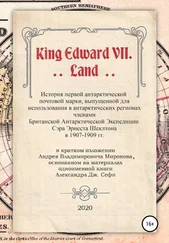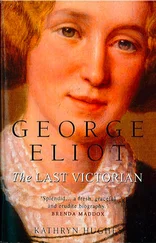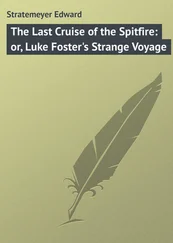Charles Hardinge went to 10 Downing Street and told Mrs Asquith that he had left Lord Knollys in tears. He suggested that a telegram should be sent summoning the Prime Minister home from the Mediterranean. Various friends called at the Palace to enquire after him, and some of the closest were allowed into his room to see him. The Archbishop of Canterbury was summoned; and the Queen herself, told that Mrs Keppel had seen the King the day before and was due to call again at five o’clock, said, ‘It will be too late’, and sent for her to return immediately. The Prince of Wales told his father that his horse, Witch of the Air, had won the 4.15 race at Kempton Park. ‘Yes,’ said the King, to whom the news had already been telegraphed. ‘I have heard of it. I am very glad.’
These were the last coherent words he spoke. Twice he fainted, and soon lapsed into a coma. He was undressed and put to bed. The Archbishop was called in from the next room, and at a quarter to midnight on 6 May 1910 the King died without a struggle.
How human he was! … What a splendour he was in the world!
‘I have lost my best friend and the best of fathers,’ the new King wrote in his diary, in an untidy hand bearing testimony of his distress, on the evening of the first day of his reign. ‘I never had a [cross] word with him in my life. I am heartbroken and overwhelmed with grief.’
Queen Alexandra also confessed herself grief-stricken. She felt as if she had been turned into stone, she told Frederick Ponsonby, ‘unable to cry, unable to grasp the meaning of it all, and incapable of doing anything’. It was not the biting cold of that wet afternoon at Sandringham that had killed him, she added as she took Ponsonby into the room where the King’s body lay, but ‘that horrid Biarritz’.
‘She was most brave and touching, calm but breaking down now and again,’ said Lord Halifax, who had accompanied the King on that walking tour in the Lake District over fifty years before and had asked if, as an old servant and friend, he might see him in death.
I was much touched by her taking up a prayer-book on a table by the side of the bed and saying, ‘That is the prayer-book you gave him; he always had it with him.’ … She took me again into the room and looked for a time, uncovering his face and said, ‘Does he not look beautiful?’ … He was lying on a little bed screened off from the rest of the room, just under a picture of Prince Eddie and his mother. He was not in the least altered and had that look on his face that death so often brings.
Lord Carrington was also shown into the darkened room; and as he looked down at the King’s ‘beloved’ face which appeared ‘quite happy and composed’ above the collar of a pink shirt, he felt that he had lost the ‘truest friend’ that he had ever had. Charles Hardinge was taken in to see the King, too, and the Queen gave him the jade bell which he had so often seen on the King’s writing-table and which Hardinge thereafter regarded as one of his ‘greatest treasures’. ‘I was deeply moved at seeing there, lying on a simple bed, the dead man who had been so good to me and whom I really loved,’ Hardinge wrote. ‘To me he was always the kindest of masters … I have always missed him since.’
Ponsonby felt the same. He remembered what a ‘lovable, wayward and human’ master the King had been. He recalled numerous acts of kindness: how, for instance — unlike Queen Victoria, ‘who rarely considered the feelings of her Household’ — he would often, without being asked, suggest to ‘some married man that he should go away and spend the week with his family’. Ponsonby called to mind one particular example of ‘that kindness of heart which characterized all his actions’. It was a small incident but it remained in his memory. It occurred during the King’s continental tour in 1903. Aboard the royal yacht was Eduardo de Martino, a Neapolitan artist who had been Marine Painter-in-Ordinary to Queen Victoria and had settled in England in 1875. Ponsonby could not imagine ‘anybody more inappropriate in the suite of an English King’ than this Martino, who had taken the place of Christopher Sykes as an ideal butt for the King’s bantering jokes. Yet Martino appeared so disappointed when he was given to understand that he ought to remain on the yacht when the royal party went ashore, that the King not only gave him permission to form part of the suite but took pains to discuss with other less sensitive members of the party a rearrangement of the order of precedence which would spare Martino’s feelings by ensuring that he did not rank last.
Numerous members of the King’s staff recalled similar instances of his kindness, tact and generosity; of his ‘enviable gift’, as Robert Vansittart, a young temporary extra private secretary, described it, ‘of making innocents feel that he really wanted to see them’; of the pleasure they themselves derived from performing some service which made him momentarily happy and brought forth that characteristic murmur of ‘yes, yes, yes’ like the purring of a contented cat; of the enthusiasm he affected upon being offered presents he did not really want, such as the stylographic pen given him by Frederick Ponsonby. It was a ‘wonderful invention’, he declared, ‘treating it like a conjuring trick’. ‘He used it for a short time simply to please me,’ Ponsonby recorded, ‘but really hated it. Then mercifully he lost it and was terrified lest I should give him another, but of course I had seen what a failure it was and never alluded to it again.’
He was always punctiliously courteous to servants, prefacing his requests with ‘please’ and expressing his gratitude with ‘thank you’ and delighting Lady Fildes’s parlourmaid by the way he bowed and smiled at her in the hall when he came to Melbury Road to have his portrait painted.
His own servants had to admit, though, that he was an increasingly difficult man to work for as he grew older. Exacting, temperamental, impatient and irritable, he also had many foibles. One of the most tiresome was his inordinate superstitiousness. He had a horror of crossed knives on a table and kept an ever-watchful eye on the Master of Ceremonies at court levees to make sure that he wore his jewel of office correctly ‘as any displacement was of evil omen’. His valets were expressly forbidden to turn his mattress on a Friday, and he would never allow thirteen people to sit down with him to dinner. Once when he discovered that he had accidentally done so three nights running at Friedrichshof, he was ‘much upset’ until he comforted himself with the thought that perhaps it did not matter as one of the company was pregnant. And Winston Churchill remembered how, as a young subaltern invited to dinner at Deepdene, he had arrived eighteen minutes late in the drawing-room where thirteen people, ‘in the worst of tempers’, were suffering from the King’s steadfast refusal to lead such an unlucky number of people into the dining-room.
Sir Luke Fildes, who was asked to do a drawing of the King on his deathbed, was surprised to see a festoon of charms and keepsakes hanging from the head of the bedstead. He thought that each one must be ‘a memento of some congenial entertainment’. But, as he was at work, Princess Victoria came into the room and enlightened him. ‘I see you keep looking at those mascots of his,’ she said. ‘The old dear used to think they brought him luck.’
Unlike many highly superstitious people, however, the King never lacked courage. Lord Redesdale recalled how, once he had made up his mind to have the operation which necessitated a postponement of his coronation, he made not the least fuss about it, though he knew that he might die. Both in Ireland and in England he had been threatened with death by the Fenians; but this had never deterred him from visiting any part of either country, even though a strong escort of police was often considered necessary to protect him. When a man who had threatened to murder him was sentenced to ten years’ penal servitude, he asked the Home Secretary to mitigate the severe sentence on the grounds that the man was probably mad. And when an anarchist student, who regarded him as responsible for ‘killing the Boers’, fired a pistol at him through the window of his carriage as his train was leaving Brussels in 1900, he behaved with the most perfect composure, never even changing colour, according to Charlotte Knollys, who was in the royal carriage, calling out to the people on the platform, who had grabbed hold of the would-be assassin, not to harm him. ‘The King was the only man I ever met,’ Lord Carrington noted in his journal after his friend’s death, ‘who did not know what moral or physical fear meant.’
Читать дальше










